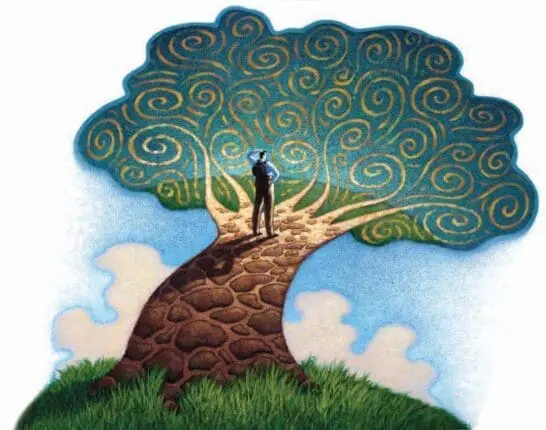To understand the challenge our field faces today, we first need to recognize that psychotherapy as we know it came out of the particular cultural milieu of the mid- to late-20th century. But the culture has moved on, and we haven’t adapted very well. As a result, we’re suffering the same fate as many other professions that have declined in their cultural support and public clout. The most obvious of these is medicine: even though people may like their own doctor, surveys indicate a drastic decline in public admiration of the medical profession.
A big part of our problem is that our clinical models have assumed a level of universal truth about human functioning that transcends culture and history, but when the culture changes, then the model becomes outdated—psychoanalysis being a good example of this. So let’s look at how the field’s relationship with the wider culture has changed over the past century.
A good place to start might be with Freud’s coming to the United States for his lectures at Clark University back in 1920. For the first time, someone was offering a road map into the nonrational regions of the psyche and a methodology to free people from the constraints of the Victorian era. Among intellectuals and artists, the effect was electrifying. Within these cultural elites, many believed that psychoanalytic theory was replacing religion as the best guide to deeper meanings in life.
The real boom came after World War II, when the country entered into a period of great prosperity and began to support a movement of homegrown therapy: humanistic approaches, group psychotherapy, family systems, sex therapy, cognitive therapy, the various mind-body ones. They were different from the Freudian perspective, not so rooted in investigating the deeply irrational side of human nature or wedded to the idea that it could take years to unpack the psyche and heal. The idea was “Hey, this is the can-do US of A here. Let’s not get hung up on the past. Let’s really focus on the present and the future.”
The profession of psychotherapy grew rapidly in the late ’60s and ’70s. We saw the rise of psychologists, clinical social workers, marriage and family therapists, counselors, psychiatric nurses, and others kinds of therapy practitioners. Beyond that, we had public intellectuals like Gregory Bateson, Erich Fromm, and Rollo May, all of whom popularized ideas drawn from psychology and commented on civilization and culture. There was a sense that psychotherapy was in the vanguard of a social movement exploring new ways to tap into human potential and help people heal.
There was the growth of the encounter and the whole self-help movement, with all kinds of spinoffs into business and the wider society. But by the third part of the century, things began to shift. When talk therapy reached its initial ascendancy, in the ’50s, ’60s, and ’70s, medication wasn’t all that popular as a course of mental health treatment. But the coming of the Reagan era saw a drawing back of the emphasis on human potential and social transformation. As we moved into the ’80s, therapists began to embrace the medical model and DSM. To get paid through the medical system, we made a kind of pact with the devil. Psychiatry, which had been in the forefront of many innovations in mental health, accelerated its long retreat from psychotherapy. Although we rode that biomedical gravy train for a while, escalating healthcare costs proved unsustainable, and HMOs and managed care began to be more dominant in determining the way therapy was practiced.
The result was that the most innovative side of our profession began to get pinched in. There was no longer time for observation teams with video and one-way mirrors; no more cotherapy, no teams pooling collective wisdom on difficult cases. Instead of focusing on the moment-to-moment process of therapy, training reverted to “you tell me how your case went.” And then many of the innovative, free-standing psychotherapy institutes that had sprouted up couldn’t keep paying the bills and had to close.
That’s when Big Pharma became ascendant. We couldn’t compete with the corporate marketing power of the pharmaceutical companies, and we found ourselves increasingly in league with the medical model at a time when the culture was turning away from personal development, social change, and human transformation.
The book that best captured the changes in the atomizing effect of late 20th-century culture was Robert Putnam’s Bowling Alone, which examined the growing disengagement from the social commons. Research began to report major changes in measures of public trust, of whether the average person could be counted on not to cheat you. Cultural role models became wildly successful business entrepreneurs, like Steve Jobs and Mark Zuckerberg. Rather than being a well-integrated human being, the measure of success became how entrepreneurial and filthy rich you were.
Of course, when we talk about the 21st century, we have to talk about the Internet and the effect of democratizing knowledge about human functioning and healing. One of the reasons why there’s such a decline in respect for experts is that so much more information is freely available. People today, particularly the younger generation, want immediate knowledge and quick results, and even when they see a therapist, they resist the traditional idea of being a “patient.” They’re forming virtual communities of special interests in everything from celebrities to childhood vaccinations and attachment parenting. And communities of color, who have traditionally avoided therapists’ offices, are showing no obvious signs of warming up to us.
To today’s generation, psychotherapy has become a commodity to be consumed at the lowest price that insurance panels allow. Our academics get heated up about evidence-based therapies, and our practitioners swoon over interpersonal neurobiology and attachment theory. These are all good things, but the public doesn’t give a rip. We’ve lost our groove. Even among the elites, we’re no longer part of the conversation outside of bastions like the New York Times, where psychoanalysis endures like an echo of the Big Bang. So while the culture has moved on, we haven’t moved on with it. Many of us are practicing in another century for another culture. It’s still unclear what we have to offer in a world that’s both hyperconnected and fragmented.
Our current response has been to succumb to a sense of scarcity, competing with one another on generic web directories for a shrinking customer base. We market ourselves as therapeutic handymen/women. “Give me a chance to help you with practically any problem,” we say. A competing and equally ineffective response is to double down on evidence-based therapies: “Come to me because I’m trained in a therapeutic modality you have trouble pronouncing.”
What to do? Now I’m of the dinosaur Baby Boomer generation, but I’ve had the chance to see the future in the work of therapists like my daughter, Elizabeth, who are in tune with the new culture and learning from Internet marketing gurus, the most influential cultural leaders of our time. So here’s a road map to a future of relevance.
Assume a future of abundance, not scarcity. Collectively and individually, we have something amazing to offer people living in the buzz of the 21st century. There’s a growing hunger out there for authentic ways to live and connect—or in Freud’s eternal terms, to love and work. We’ve barely tapped the market of people potentially interested in psychotherapy.
Start pivoting away from the DSM and insurance. Getting in bed with the DSM gave us temporary pleasure, but then we became monogamous with the medical model, one of the least creative forces in today’s culture. The more you can free yourself from the vice of medical necessity and payers who stand between you and prospective clients, the freer you’ll be to innovate and attract the clients you can help the most. The physicians most interested in referring to therapists care about how their patients are functioning in the world, not about DSM diagnoses.
Specialize, don’t generalize. The only way not to be a commodity is to distinguish yourself by doing one thing exceptionally well. You can still see clients with other problems, but market yourself as an authority on something you love to do. The new breed of therapists are touting their expertise and passion for adoption therapy, reproductive-issues therapy, hoarding therapy, skin-picking therapy, and running therapy. In the future, it may not be enough to specialize in one of our given domains, like couples therapy or therapy for anxiety disorders. My daughter and I train therapists and help them market Discernment Counseling, a special approach to working with mixed-agenda couples, where one is leaning out of the relationship and the other wants to save it. People don’t care about what model we learned in graduate school, but they do care about whether we understand how they’re hurting and how we can help them.
Brand yourself. I never thought I’d use the b-word in print, but there you have it—brand. In today’s world, the only way to garner attention is to have a story that draws people to you. Why did you choose your special area of practice? Is there a personal story, a professional story, or both? Why it is your passion, not just your specialty? How did you become an authority on this problem—not just through formal education and supervision—and how did that journey of learning transform your work? Were there forces you had to overcome to launch your unique service, such as the opposition of insurance companies or the cultural stigma that kept clients from seeking your help? When clients come to see you, how might their experience differ from their experience with a generic therapist? Are you especially funny, warm, straightforward, practical, patient? Do you love working with people from specific populations or communities? Do you use an evidence-based approach because you want to make sure you’re really helping people? Do you regularly check in with clients to see how the therapy is progressing? If you can answer questions like these on your website and in conversations, you won’t be a commodity!
Collaborate, don’t isolate. Today’s culture of scarcity in therapyland makes colleagues a threat to your business. But today’s marketers have learned that more is often better when it comes to generating public interest. The first coffee shop in a town attracts the early adopters of specialty coffee. But 30 more coffee shops bring out the rest of the population. If you practice medical family therapy, then having other medical family therapists all over your metro area will raise awareness among referring physicians and the public. So form collaboratives for mutual learning and visibility. It’s hard to be a magnetic attractor all alone, but together we can show our communities that a new social trend is underway.
These changes are just a start. Therapy in the 21st century will have to move online as well as offering butts-in-chairs services. We’ll need teletherapy, both live on screen and in asynchronous exchanges via texts or emails—including across state lines and internationally. (Our licensing boards will kill the profession if they don’t adapt.) Millennials in Chicago will want an expert therapist on, say, complicated grief in stepfamilies who practices in Tallahassee. Online therapy without borders will coexist with traditional therapy in our offices.
The therapy stars of the future will be those who so successfully address the needs and engagement styles of the culture that they’ll open up opportunities for the rest of us to prosper in seeing clients one at a time. In other words, the new gurus won’t just be teachers of good therapy: they’ll be marketers and organizers of communities of therapists who attract curiosity and then enthusiasm. To echo Justin Timberlake, they’ll “bring sexy back” to psychotherapy.
William Doherty
William Doherty, PhD, is emeritus professor of family social science and former director of the Minnesota Couples on the Brink Project at the University of Minnesota. He is cofounder of Braver Angels and author of the book, Becoming a Citizen Therapist (with Tai Mendenhall).












